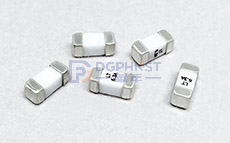Whether the volume of the fuse can function properly after being reduced requires a comprehensive analysis of its working principle and design logic:

1. Implementation conditions for core functions
The protective effect of a fuse depends on the balance between the "current thermal effect" and the "melting characteristic". The rated melting current (I_t) is determined by the material resistivity (ρ), length (L), and cross-sectional area (S), and the formula is It ∝ LS ⋅ ρ. Volume reduction may change parameters in two ways:
Shortening length (L reduction): Under the same material, the melting current threshold decreases, which may cause false melting;
Reduce cross-sectional area (S reduction): As the current density increases, the heating rate increases, which may accelerate melting but sacrifice surge resistance.
2. Dynamic game between heat capacity and heat dissipation capability
The reduction in volume directly leads to a decrease in heat capacity (C=mc, where m is the mass and c is the specific heat capacity of the material). At the moment of overload:
Advantages: A smaller heat capacity leads to a faster temperature rise, theoretically shortening the melting time;
Risk point: If the heat dissipation conditions are not optimized synchronously (such as a decrease in surface area/volume ratio), continuous small overload may lead to heat accumulation, which may delay the circuit breaker and form a failure mode of "continuous interruption".
3. Chain reaction of rated parameters
Rated current: The reduction in size may force a decrease in the rated current value. If it is still used in the original design current circuit, it will frequently cause unnecessary melting;
Rated voltage: Reducing the volume may decrease the arc extinguishing ability, making it difficult to extinguish the arc in a timely manner in high-voltage circuits, resulting in continuous arc pulling or even fire.
4. Compromise and Cost in Actual Engineering
Micro fuses (such as patch type) can maintain performance while reducing volume through material innovation (such as silver tin composite alloys) and structural optimization (such as widening pins to enhance heat dissipation). But this type of design needs to be redone:
Fuse consistency testing (such as I ² t curve verification);
Pulse endurance test (simulating switch on/off surge);
Thermal cycle verification (ensuring long-term reliability).
Conclusion: A fuse that simply reduces its volume without adjusting its material and structural parameters will significantly degrade its protective function. Miniaturization that meets safety standards needs to be achieved through breakthroughs in material science and precision design, rather than simple geometric scaling. Therefore, the "reduced version" fuse without redesign cannot guarantee normal protection function and may even introduce new safety hazards.
